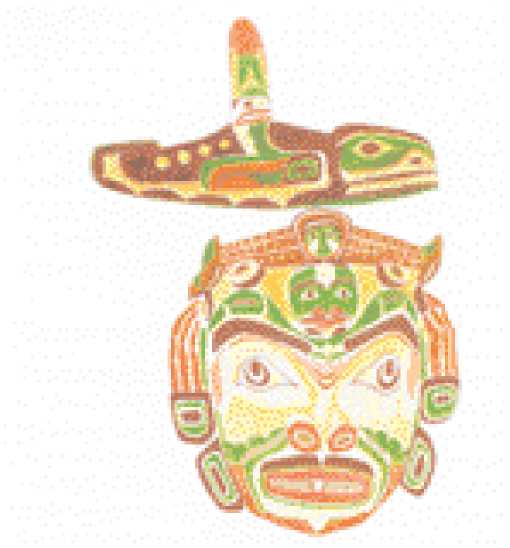In 1881—83, George Hunt, born a TLINGIT but raised Kwakiutl, was hired as a guide and interpreter by Johan Adrian Jacobsen to help in the acquisition of Indian artifacts for museum collections. In 1886, Hunt met the anthropologist Franz Boas and worked with him as a guide, interpreter, and informant. He again served as guide and interpreter for the Morris K. Jesup North Pacific Expedition in 1897, which sought to investigate the connections of the ALEUT, INUIT, and ATHAPASCANS of Alaska with the Native inhabitants of Siberia.
In 1903, Hunt helped organize the Northwest Coast Indian exhibit of the American Museum of Natural History in New York City. He was Boas’s infor-

Kwakiutl painted wooden mask of Spirit of Sea with a killer whale on top

A Kwakiutl woman, the daughter of a chief
Mant and collaborator on Kwakiutl Texts (1905—6) and The Ethnology of the Kwakiutl (1921). Other projects included helping secure artifacts of the Northwest Coast tribes for the collection of George Heye, the founder of the Museum of the American Indian in New York City; and, in 1912, helping the photographer Edward Curtis in the making of the motion picture In the Land of the War Canoes. Hunt was eventually selected as a chief of the Kwakiutl.
In the 1950s, another Kwakiutl helped in the preservation of his people’s traditional culture. Naka’penkim, or Mungo Martin, was a hereditary chief and also a master carver. He called public attention to the fact that many totem poles had been destroyed by overzealous missionaries and that others were rotting in the humid weather of the Pacific Northwest. His efforts began a period of conservation of remaining totem poles and other artifacts.




 World History
World History









